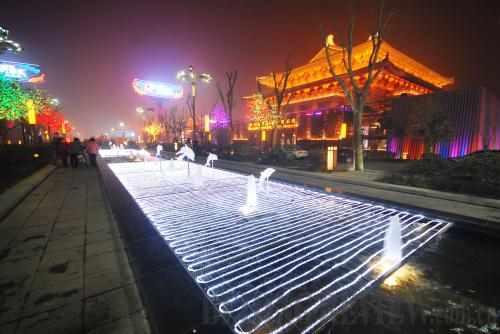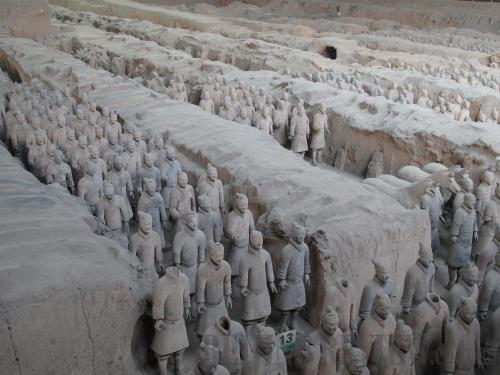|
Silk Road
In ancient times, the Silk Road was an important trade route across the Asian continent, connecting Eastern, Southern and Western Asia with the Mediterranean world, including Northern Africa and Europe. After the route was created in the Western Han Dynasty (202 B.C.-A.D. 9), trade between China and Central Asia and Europe rapidly increased. Chinese products, especially silk, were transported along this route to the West, thus giving it the name "Silk Road."
After several centuries, the Silk Road extended to Korea and Japan in the east and to Italy and Egypt in the west, becoming a bridge for political, economic and cultural exchange between the East and the West.
Trade on the Silk Road was a significant factor in the development of the civilizations of China, India, Egypt and Persia (now Iran).
Xi'an
 |
|
A night view of today's Xi'an (WEI YAO) |
Xi'an, capital of northwest China's Shaanxi Province, is known for its rich historical and cultural resources. Called Chang'an in the past, the city was the capital for 13 Chinese dynasties. The most prosperous dynasties in China's history—Zhou (11th century-256 B.C.), Qin (221-206 B.C.), Han (202 B.C.-A.D. 220) and Tang (618-907) dynasties—all chose the city as their capital. For this reason, Xi'an enjoys fame as a "history museum."
 |
|
Terracotta Warriors (WANDI) |
The world famous Terracotta Warriors and Horses, a collection of terracotta sculptures depicting the armies of Emperor Qinshihuang (259-210 B.C.), was found 37 km from the city. Other important historical sites include the City Wall, built on outline of the city during the Ming Dynasty (1368-1644), the 64.5-meter Big Wild Goose Pagoda built in 652, and the Huaqing Hot Spring. The Shaanxi History Museum displays Shaanxi's history and culture, as well as China's ancient civilization.
Today, Xi'an, with a population around 8.4 million, is the financial, technological and transportation center of northwest China.
|
